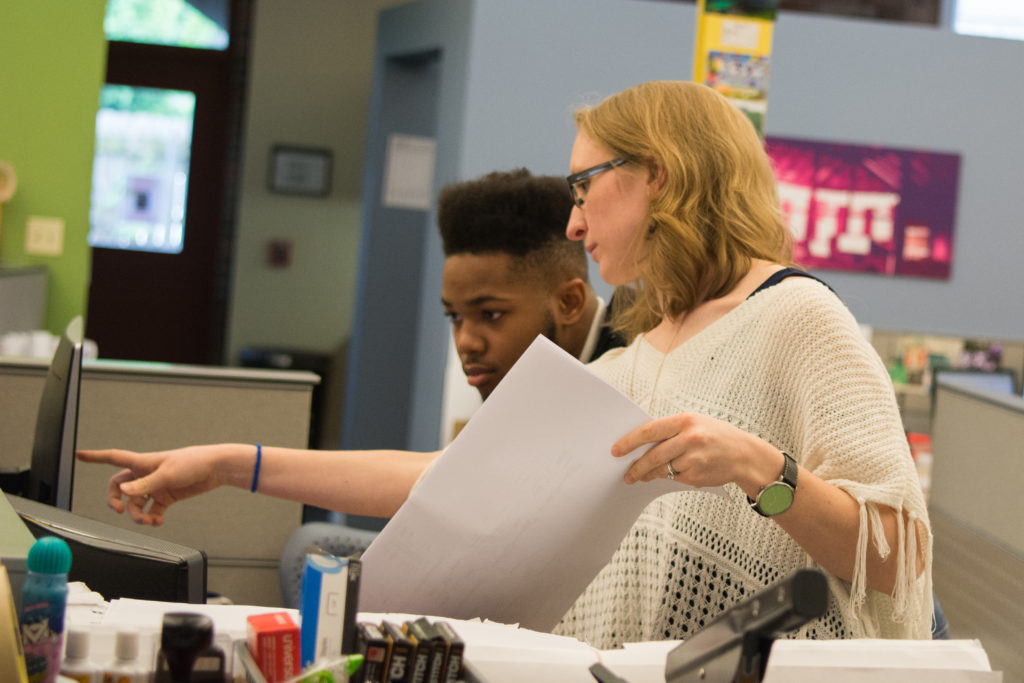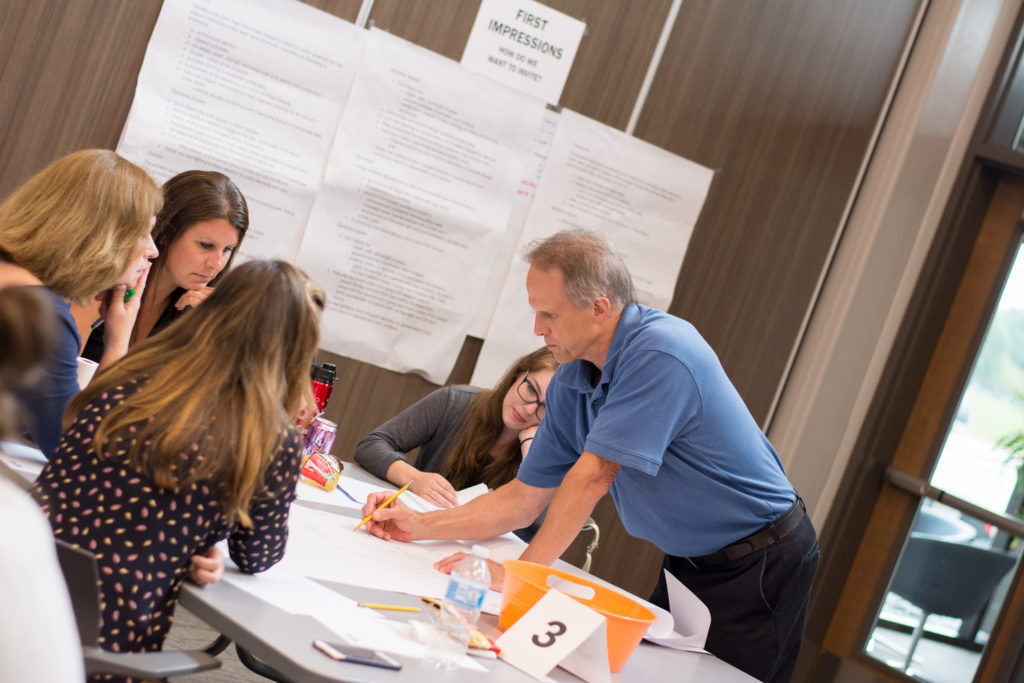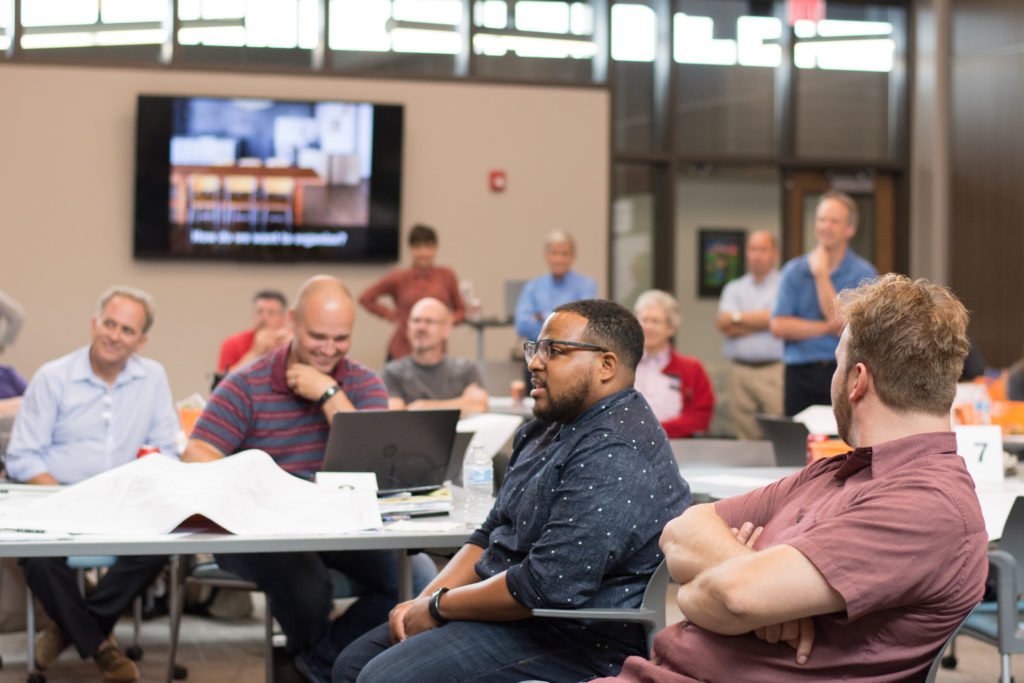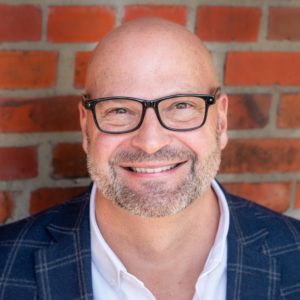ThenDesign Architecture is a proud participant of the ACE Mentor Program in Cleveland, Ohio. The ACE Mentor Program is an afterschool, educational program that exposes high school students to the architecture, construction, and engineering industries. Partnering with schools across the United States, including the Cleveland Metropolitan School District, designers from TDA recently explained the importance of communication in our field. For this engagement session, Jeff Henderson, Claire Bank and James Cowan built a “super-sized” architectural canvas to emphasize why we need to take a different perspective on architectural drawing.
About the ACE Mentor Program
The ACE Mentor Program of America is an afterschool program which was crafted to attract high school students to the architecture, construction, and engineering industries as well as the skilled trades. With over 70 affiliates across 37 states in the continental Unites States, the program is mostly based in metropolitan areas and allow students to explore different design projects in the industry.
The program brings together more than 4,100 professionals, high school teachers and students at events, with each one covering a different aspect of the architecture, engineering and construction industry. Trade professionals deliver educational sessions, engagement activities and take students on site visits to help them better understand how the built world is shaped. ACE also awards approximately $2.5 million annually in scholarships to those who are pursuing industry centered careers.
Interestingly, more than 70% of ACE seniors enter a skilled trade program or enter college with an industry-related major. According to ACE’s student surveys, the majority of students passing through the program felt motivated to attend college and picked up skills and knowledge that weren’t covered in their formal education.
At TDA, several of our designers, have participated in this important program. We have seen firsthand the difference it makes.
A Different Perspective on Architectural Drawing
Jeff Henderson, a 12-year ACE mentor at John Hay High School in Cleveland, who presented this year’s session on drawing commented: “Architectural drawing is really about telling a story. It’s a story about a building. Just as a writer uses words to create a verbal story, an architect uses drawings to tell a creative visual story.” A foundational principle of architecture is that a designer must communicate their ideas to a client or other professional on a collaborative team. To be a leader in this industry, we must be able to communicate effectively.
For Jeff, the importance of drawing touches on three vital areas–learning, thinking and communicating. He states: “For me, drawing is a form of learning. When architects see a building or walk into a space, they suddenly shift into “architect mode” and they begin asking themselves questions. “Why does it look like that?” “Why did they use that material?” “How was that detailed?” It is said that inspiration comes from anywhere and that is absolutely true. So, we analyze good buildings and good spaces and record them through drawings and notes. The second part is that drawing is a form of thinking. It is in the process of drawing where you start to think about the design of a building and it becomes a process of testing, looking at different ideas and making decisions to move the design along. The third portion is that drawing is a vital tool for communication. The ability to clearly communicate designs, visually and verbally, to clients or stakeholders is crucial. That is probably the most important skill an architect can have.
“Behind the Scenes” Setup
As a firm dedicated to educational design, we continually think about unique ways to engage students, educators, and communities. While these sessions are normally conducted in person, during this time of distanced learning and remote workshops, the mentorship team devised a new way to communicate architectural drawing conventions.
They devised a setup that involved suspending a high-definition camera, with a wide angle lens 10′ in the air in our unfinished office building. Then we laid out (3) 4’x8′ sheets of wall board side by side creating a “life sized canvas” that was 12′ wide x 8′ high. The team then took turns sketching plans, sections, elevations, and perspectives on the sheets to demonstrate how designers use these different types of drawings to communicate their ideas.
In the presentation, Jeff used these examples to illustrate how a simple drawing can communicate a complicated architectural idea.
This unique presentation method allowed us to engage with students in a novel way, forcing them to take a completely different perspective on architectural drawing and its impact on communication. For Claire and James, longtime ACE Mentor participants, they found the exercise helped them see drawing in a new light. It gave the whole team an opportunity to think through the best way to engage a remote audience using technology, while underscoring the necessity of drawing throughout the architectural process.
For Claire, education has always been a focus of her career, “So I try to find other ways, besides designing schools, to weave education into what I do with my career. I think ACE brings architecture and its related fields to schools that may not focus on it as much. Especially serving schools in Cleveland, we are focusing on developing skills that could lead to opportunities for underprivileged communities, leading to more diversity in the industry.”
Similarly, James learned about educational design through mentors involved in the ACE program. This led him to a love of this kind of design. “What’s funny is I didn’t know I would be as passionate about educational design until I got to TDA. They had a mentorship program through ACE and I started to learn more about them. Once I got here, I started understanding the impact within a community, and that’s something I wanted to be a part of. It’s very exciting to see the groundbreaking, then openings and kids running into a new school. You can see how it impacts someone’s life.”
We are committed to bringing a different perspective on architectural drawing, educational design and developing new ways to engage with communities on their projects. We look forward to providing new vantage points for the next round of high school students entering the AEC industry.
Sign up for the newsletter below to be informed when the full session is released!
Let’s work together to make education better. Interested in speaking with us? Get in touch!
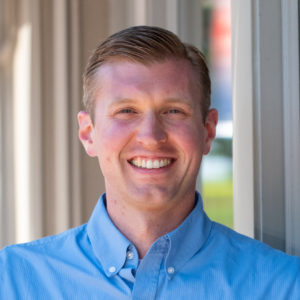
Ryan Caswell
Communications
Get our newsletter with insights, events and tips.
Recent Posts:
Bryden and Hilltop Celebrate Their Groundbreakings
Brunswick High School Senior Seminar Presentations
New Mentor High School Baseball Field Opens
North Ridgeville Visual Preference Exercise
Meet the Designers: Katherine Mitchell
Garfield Heights High School Stadium Groundbreaking

